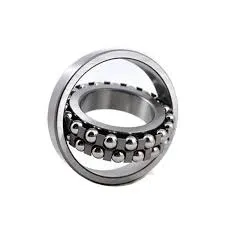
10 月 . 18, 2024 17:16 Back to list
Understanding the Benefits and Applications of Tapered Roller Bearings in Modern Machinery
Understanding Tapered Roller Bearings A Comprehensive Overview
Tapered roller bearings are essential components widely used in various industries, including automotive, aerospace, and manufacturing. Known for their unique design and functionality, these bearings play a crucial role in ensuring the smooth and efficient operation of machinery and equipment. This article delves into the structure, benefits, applications, and maintenance of tapered roller bearings, providing a clearer understanding of their significance.
Structure of Tapered Roller Bearings
Tapered roller bearings consist of an outer raceway, an inner ring with a tapered interior surface, and a set of tapered rollers located between the two. The rollers are designed in a way that allows them to make contact with the inner and outer race at a specific angle, which helps distribute the load over a larger surface area. This design is particularly effective in handling both radial and axial loads simultaneously, making tapered roller bearings suitable for applications that experience heavy and varying loads.
The tapered shape of the rollers allows for a more optimal contact angle with the raceways, which enhances the bearing's efficiency and load-carrying capabilities. These bearings are typically constructed from high-quality steel, providing the necessary durability and strength to withstand harsh operating conditions. Additionally, tapered roller bearings are available in different sizes and configurations, catering to the specific needs of various applications.
Benefits of Tapered Roller Bearings
Tapered roller bearings offer several advantages over other types of bearings, making them a popular choice in many applications
1. High Load Capacity Due to their design, tapered roller bearings can support heavy radial loads while also managing axial loads. This dual capacity makes them ideal for various industrial applications.
2. Improved Efficiency The tapered design minimizes friction between the rollers and raceways, enhancing the efficiency of the system and reducing energy consumption.
3. Versatility Available in different sizes and configurations, tapered roller bearings can be tailored to meet the unique requirements of various applications, from automobiles to industrial machinery.
4. Long Service Life The high-quality materials and precise manufacturing processes used in tapered roller bearings contribute to their longevity, reducing the need for frequent replacements.
5. Easy Installation and Maintenance Tapered roller bearings are relatively straightforward to install and maintain, which is a critical factor for industrial operations where downtime must be minimized.
Applications of Tapered Roller Bearings
tapered rollers

The versatility of tapered roller bearings allows them to be used in a wide range of applications across different industries
- Automotive Industry Tapered roller bearings are commonly found in vehicle wheel hubs, transaxles, and transmissions. Their ability to endure heavy loads and provide smooth operation makes them ideal for automotive applications.
- Aerospace Industry In aviation, tapered roller bearings are utilized in turbine engines, landing gears, and other critical components. Their reliability and performance in high-stress environments are essential for safety in the aerospace sector.
- Manufacturing Many types of machinery and equipment, such as conveyor systems, crushers, and milling machines, rely on tapered roller bearings for smooth operation and load distribution.
- Rail and Heavy Machinery The transportation sector, including railways and heavy construction machinery, also benefits from the strength and reliability of tapered roller bearings.
Maintenance and Care
To ensure the longevity and optimal performance of tapered roller bearings, regular maintenance is crucial. Here are some key maintenance tips
1. Regular Inspections Periodically inspect the bearings for signs of wear, deformation, or damage. Early detection can prevent larger issues down the line.
2. Proper Lubrication Adequate lubrication is essential to minimize friction and wear. Ensure that the bearings are regularly lubricated with the appropriate grease or oil.
3. Correct Installation Follow manufacturer guidelines for installation to prevent misalignment, which can lead to premature failure.
4. Monitoring Operating Conditions Keep track of temperature and load conditions. Extreme conditions can adversely affect the performance and lifespan of bearings.
Conclusion
Tapered roller bearings are vital components that contribute significantly to the efficiency and reliability of mechanical systems across various industries. Their unique design, combined with their ability to handle heavy loads and reduce friction, makes them an essential choice for many applications. By understanding their structure, benefits, applications, and maintenance requirements, engineers and operators can make informed decisions that enhance the performance and longevity of their equipment.
Latest news
-
Unlocking Efficiency with Spherical Roller Bearings
NewsOct.29,2024
-
The Ultimate Guide to Thrust Ball Bearings
NewsOct.29,2024
-
The Power of Thrust Roller Bearings: Engineered for Excellence
NewsOct.29,2024
-
The Power of Deep Groove Ball Bearings for Your Application Needs!
NewsOct.29,2024
-
The Power and Performance of Cylindrical Roller Bearings
NewsOct.29,2024
-
High-Quality Ball Bearing Manufacturing Machines
NewsOct.29,2024
